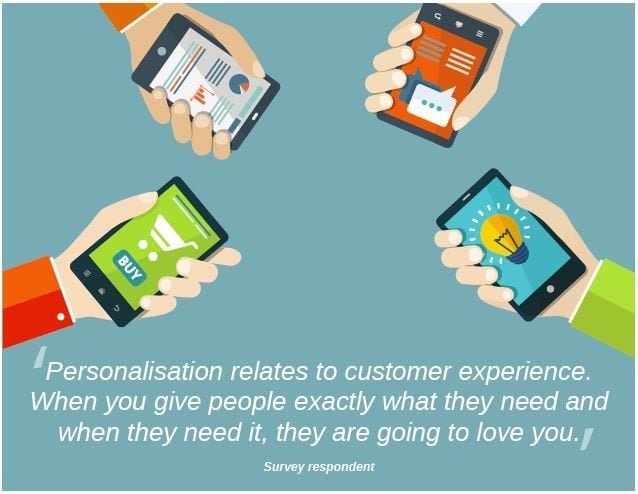Why Shopify Needs To Be Part Of Your 2018 Ecommerce Plans
This is a post from contributing author Victoria Greene – Brand Marketing Consultant & Freelance Writer.
4 min read
![]() Solar Trust Centre Team
6 November 2015 5:12:03 PM
Solar Trust Centre Team
6 November 2015 5:12:03 PM
We've seen a lot of technological changes in the last decade. The development of new technologies, new channels, new tools and new rules has led to the emergence of increased consumer demands, and with this comes an expectation of bigger things from marketing departments.
The widespread reduction of budgets and the ever changing nature of customer communication requires marketing to develop and generate enhanced response rates and more effective brand engagement with customers. And with customer purchasing being deterred by an ever present economic slump, many marketing departments are feeling the pressure to generate enhanced response rates and more revenue on a small operating budget.
Years ago, marketers and their strategies were focused on targeting a wide ranging aspect of the population with traditional advertisements without any specific target or niche. Marketers can't operate in this way anymore. If you’re a business without a modern marketing plan, you're going to fall behind.
Technology is evolving and your business should adapt to these changes. The internet and the rise of mobile computing has transformed and now dictates how we absorb and share information every day. For many modern consumers interaction and engagement is expected from businesses and brands, leading to a greater demand on businesses to release captivating, relevant and genuinely useful content for their audience.
Before today’s advanced digital technology, the words “marketing personalisation” simply referred to the inclusion of a customer's name in different locations through communication. As technology evolved, so too did the ability to further personalise with varying degrees of customer segmentation. What used to be wide-range targeting has evolved into the niche targeting strategy of marketing.
 Image credit:
blogs.adobe.com
Image credit:
blogs.adobe.com
Marketing professionals today understand how to leverage digital technology and take content personalisation to new levels, achieving a one-on-one marketing dynamic. Present-day consumers expect brands and businesses they interact with to understand their needs and provide useful and relevant information on products, services and solutions. Most of the time, these customers will not waste their time interacting with a company that doesn’t reciprocate the interaction in a useful, intelligent and pleasing way.
A successful and mutually beneficial relationship between brands and consumers will depend mostly on the first interaction. Just like any social situation, the first impression often sets the vibe for the rest of the relationship and determines if the relationship will continue or not. To put it simply, customers view their relationship with businesses just like they evaluate a personal relationship; trust and transparency should be the basis of the relationship, which will result in a genuine personal brand experience. As the needs of individual consumers changes and evolves, businesses and marketers should always remain informed and quick to take action to provide their target market’s requirements and engagement. Businesses should also realise that true personalisation is about giving the customers what they want before they even know they want it.
Although first impressions are important, brands, businesses and marketers should continue to know, listen and adjust to what the customer needs and respond accordingly. A personal relationship between the business and customer should be nurtured. If a customer feels that a business is not holding up their end, an unhappy customer will not hesitate to find another business that will take care of them. Remember, word of mouth is a very powerful tool. If one customer is not happy with your business, that customer can easily spread the word about their experience. They can post on different social media platforms or even blog about it and your business may suffer. Before you know it, you’ve lost customers and your business has become a hot topic in the digital world; in this case, not a good thing.
Brands need to think about unique ways to find out how their niche or target audience think and what they want. Again, trust must be established and only then can you position your brand as the consumer’s personal choice in fulfilling their needs. One goal of personalisation is to reach customers on an emotional level so that psychologically, they will feel a personal connection with business, company or brand. Once that connection and trust are established and nurtured, customers will feel comfortable, remain loyal, engaged and possibly recommend your brand to other people.
Recent statistics from analyst firm Gartner showed that by 2016, 86% of marketers expect to primarily compete on the basis of the customer's brand experience as well as product and service delivery to the customer. This statistic is not surprising because a genuinely personalised experience can make a customer feel valued. If businesses use consumer data in a smart and effective way, it ensures that the information they share will always remain relevant to the target recipient.
 Image credit:
coolerinsights.com
Image credit:
coolerinsights.com
 Image credit:
www.elcomcms.com
Image credit:
www.elcomcms.com
It is clearly true that using customer data in a productive and personalised way can create a positive customer experience. Leaving your targeted advertising and marketing strategy to chance is not enough in today's business world. Personalisation should start with understanding how your target niche wants to engage with you and your brand specifically, with data collection and communication preference. It will make a big difference to your marketing success if you start practicing something that is going to make you stand out among the others. Personalisation will leave your customers with a memorable and positive experience with your brand.
This is a post from contributing author Victoria Greene – Brand Marketing Consultant & Freelance Writer.
CX (Customer Experience), UX (User Experience) and UI (User Interface) have all seen a renewal in interest as disciplines in the last couple of...
It's that time again! If you follow us on Facebook, Twitter or Google+ then you’ve probably seen us sharing the following posts. If not, it's time to...